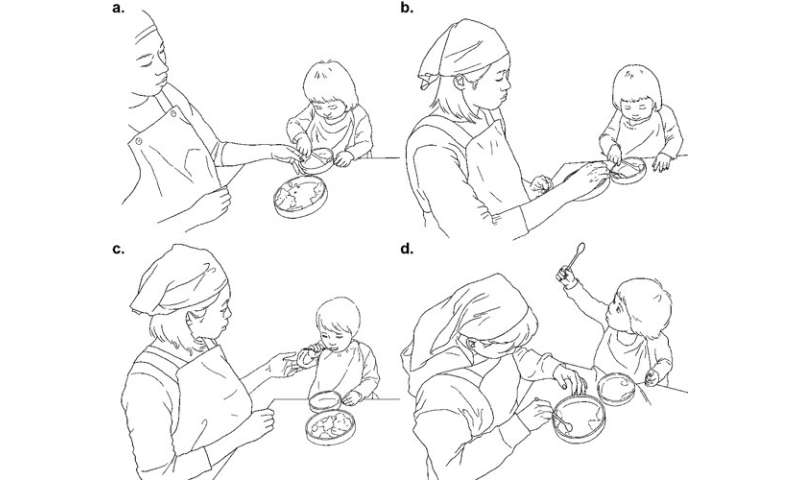
When toddlers begin to use a spoon to eat by themselves, what kind of interactions occur between them and their caregiver to facilitate this behavior?
An international research collaboration led by Kobe University’s Professor NONAKA Tetsushi (Graduate School of Human Development and Environment) and the University of Minnesota’s Professor Thomas A. Stoffregen investigated the interactions between toddlers learning to use a spoon and their caregivers during mealtimes at a daycare center in Japan.
The research findings were published in Developmental Psychobiology on December 11, 2020.
Research Findings
A 10-month longitudinal observation of 12 toddler-caregiver dyads during mealtimes was carried out at a daycare center in Japan. The onset of independent spoon-feeding was identified for each toddler (mean age: 17.88 months). The researchers then investigated the temporal relationship between the following terms in the video data of mealtimes immediately after this onset: 1. The caregiver’s assistive actions, 2. The toddler’s spoon usage, and 3. The toddler’s gaze towards the caregiver.
Analysis of the results showed that toddlers were more likely than chance to move their spoons towards the food immediately after the caregiver had changed the position of the plates or the food on them in order to give the toddler the opportunity to try to feed themselves. The researchers also found that the amount of time that toddlers spent looking at the caregiver’s hands was significantly longer than the time spent looking at their face. Moreover, toddlers were 8 times more likely to look at the caregiver’s hands than perform any other action when the caregiver was moving items around on the table.
In addition, the researchers found a clear difference between the circumstances in which toddlers looked at the caregiver’s face and the circumstances in which they looked at the caregiver’s hands. Toddlers were most likely to look at the face in order to check whether or not the caregiver was watching their behavior, either after the toddler had fed themselves with the spoon or after they had played with the spoon in a manner unrelated to eating. These incidences of toddlers’ checking caregiver reactions were too numerous to be chance occurrences.
Source: Read Full Article